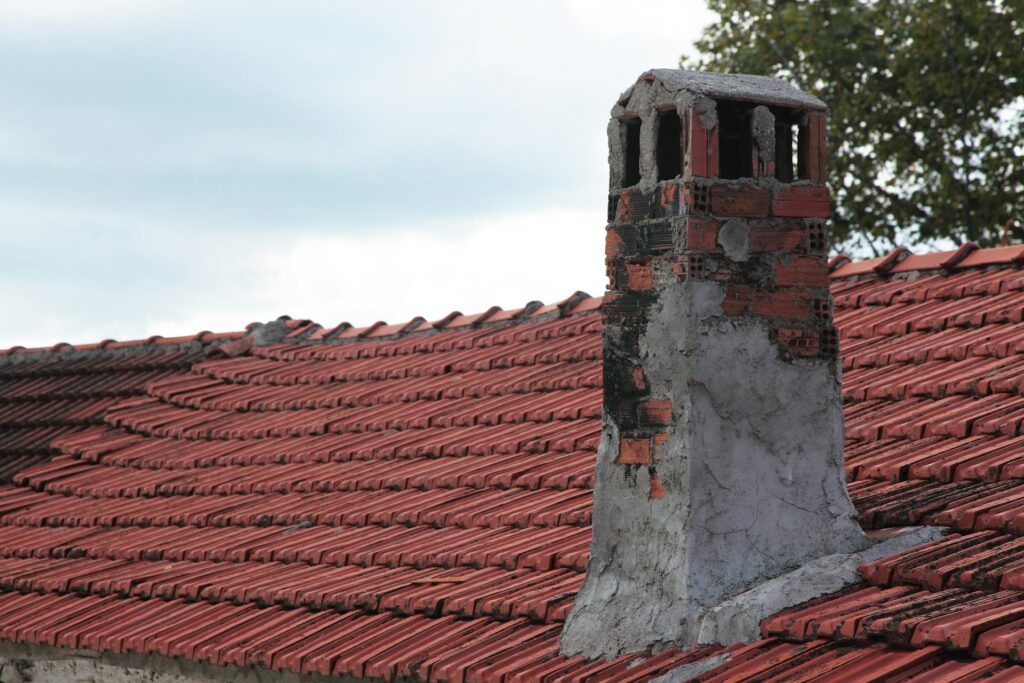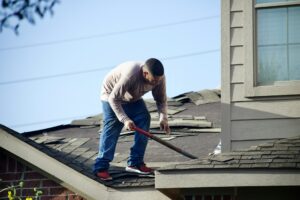Tile roofs stand out for their classic appeal and sturdy build. In Oregon, however, constant rainfall, occasional snow, and a moist climate can challenge even the best tile roofs. By understanding the unique demands of the Pacific Northwest environment, you can proactively care for your investment, preventing small issues from turning into costly repairs. Whether you are a homeowner or overseeing multiple properties, these adaptable strategies will help keep your tile roof in prime condition year-round.
The Importance of Regular Care
Rain-soaked winters and temperate summers create an environment where moss, algae, and debris can accumulate on tile surfaces. Over time, these organic materials can degrade both the roof’s appearance and its functionality, potentially leading to hidden cracks or leaks. Proactive care ensures you catch potential problems early, preserving your roof’s structure and visual appeal.
Even high-quality tiles can experience gradual wear. Regular inspections help maintain your warranty and reduce long-term costs. Rather than viewing maintenance as a daunting task, see it as a series of small steps. By acting consistently, you maintain a proactive approach to roof care that fits naturally into an annual home-improvement routine.
Recognizing Oregon’s Climate Impact
Oregon’s coastal exposure and often unpredictable weather present specific challenges to tile roofs. Winds can blow debris into corners and crevices, while prolonged moisture can accelerate moss growth. As the seasons shift, tiles expand and contract, a natural response to temperature changes.
Understanding these patterns empowers you to anticipate potential trouble spots. High levels of humidity can seep into roofing materials if they are not sealed correctly. Meanwhile, the freeze-thaw cycle in mountainous or colder regions of Oregon can worsen tiny cracks, turning them into substantial breaks. Acknowledging these vulnerabilities allows you to proactively sustain the roof’s integrity.
Spotting Warning Signs Early
Early warning signs typically reveal themselves through subtle shifts. Small cracks, discoloration, or distorted tiles often signal underlying moisture accumulation. Gutters overflowing with gravel or tile fragments can also be a red flag, indicating steady erosion of the tile surface.
Watch for mold or mildew stains on your attic ceiling. These spots can point to hidden roof leaks. If you see them, act quickly to address the source of the problem, preventing costly damage to internal structures. With a consistent inspection schedule, these signals become easier to spot, giving you the confidence to resolve minor issues before they become major expenses.
Simple Tile Roof Inspections
Carrying out a basic inspection starts with observing the roof from ground level. Use binoculars to spot missing or misaligned tiles, suspicious gaps, or areas laden with debris. If you feel comfortable, climb a sturdy ladder to take a closer look, but always prioritize safety. A stable ladder, non-slip shoes, and a spotter are essential prerequisites.
During your inspection, gently run your hand over the tiles. Rough patches or a grainy residue can indicate weathered surfaces. Keep an eye out for visible cracks or loosening mortar around ridge caps and at termination points near vents or chimneys. By systematically checking each area, you create an adaptable maintenance routine that helps detect changes before they worsen.
Priority on Cleanliness
A clean tile roof is better poised to repel Oregon’s frequent rain showers and prevent moisture from taking hold. Removing built-up debris reduces moss growth and preserves the tile’s protective coating. Even if you only schedule a deep cleaning every couple of years, a light cleaning each season can promote harmony between the roof’s natural durability and the region’s damp conditions.
- Clear leaves, twigs, and other debris from valleys and gutters.
- Use a gentle pressure-wash or specialized cleaning solution designed for tile roofs.
- Be mindful of water pressure; excessive force can damage tiles.
- Rinse thoroughly, ensuring no chemical residue remains.
Regular cleaning refreshes the roof’s surface, ensuring it remains breathable and resilient against mold, mildew, and algae.
Protecting Against Moss and Algae
Moss thrives in Oregon’s damp environment. Once it takes root on tile, it can push into seams and cracks, damaging the underlying structure. Algae, while less invasive, can create dark streaks that reduce the roof’s reflective properties and overall appearance.
Consider preventive measures that respect the environment as well as the tiles:
- Trim surrounding trees to reduce shade and improve airflow.
- Apply moss-inhibiting treatments approved for tile roofs.
- Keep gutters clear to prevent water backups that promote moss growth.
- Position zinc or copper strips near ridge lines to provide continual, gentle moss control as rainwater flows downward.
These preventive steps help your roof work with Oregon’s climate rather than against it, minimizing the labor-intensive cleanups that come with unchecked moss growth.
Dealing with Damaged Tiles
Cracked or broken tiles compromise your roof’s waterproofing and insulation. They can also create a pathway for pests. Replacements require careful matching of tile styles and colors, but the process is fairly straightforward with the right approach.
Start by gently lifting the tiles above the damaged piece. Use a pry bar or specialized roofing tool to unclip the affected tile. Replace it with the matching tile, ensuring a snug fit that aligns evenly with its neighbors. Secure any fasteners and gently slide the adjoining tiles back in place. This seamless fix helps safeguard your roof’s cohesive look.
When to Consult Professionals
Attempting to fix larger or more complex damage without the proper expertise can lead to further complications down the line. The distinctive contour of tiles means specialized skills are often required. If you notice widespread cracks, significant sagging, or ongoing leaks that persist despite repeated fixes, call in an expert for a professional inspection.
In Oregon, reputable roofing contractors like HOMEMASTERS have hands-on experience with tile-specific challenges. They can spot concealed stress points that less experienced eyes might miss, ensuring that repairs are thorough and enduring. For comprehensive roof repair services, visit HOMEMASTERS to learn more about restoration plans that align with local conditions.
Optimal Maintenance Schedule
Creating a well-rounded tile roof maintenance schedule doesn’t have to be daunting. Integrating tasks into your yearly routine helps spread the workload while ensuring you stay ahead of potential problems.
- Spring: Remove accumulated winter debris and check for cracks caused by freeze-thaw cycles.
- Late Summer: Clear gutters after windy months and remove early moss growth.
- Autumn: Clear fallen leaves before they become soggy and heavy, leading to water pockets.
- Pre-Winter: Confirm your roof is free from suspicious gaps or missing tiles, minimizing issues during the rainy season.
This cycle follows Oregon’s seasonal changes, ensuring proactive maintenance based on predictable weather patterns. Additionally, keep a record of each maintenance session in a dedicated home journal for future reference.
Energy Efficiency Benefits
A well-maintained tile roof provides natural insulation, thanks to the tile’s density and the convenient air pockets beneath its layers. By reducing water intrusion, you help maintain interior temperature levels and lessen your reliance on high indoor heating. In a region like Oregon where heating bills climb in the winter, this can translate into substantial cost savings over time.
Tiles also reflect heat away from your home better than many alternative roofing materials. When combined with proper insulation and intact underlayment, you’ll notice improved comfort and reduced energy bills. Looking at your roof holistically reveals how roof health directly affects overall home efficiency.
Real-World Example
Consider the experience of a homeowner in Portland who inherited a tile roof that had gone without professional care for years. Upon closer inspection, they spotted moss thriving in shaded valleys. Water had started seeping through tiny cracks, discoloring interior walls. Facing both a moss issue and an unseen leak, they feared a complete overhaul.
A strategic plan soon took shape. First, the moss underwent thorough removal, using gentle scraping, low-pressure washing, and a moss-inhibiting treatment. Damaged tiles were replaced, and broken sections of underlayment were patched. With gutters fully emptied, water flow returned, preventing further pooling near vulnerable spots.
Within weeks, the roof’s overall condition noticeably improved: no more dark streaks, sagging tiles, or interior water stains. The homeowner now follows a consistent maintenance schedule, avoiding major service costs. This outcome underscores how adaptable and responsive your approach can be when you address problems as soon as they appear.
Safety Considerations
Tile roofs can be slippery, particularly with moss or algae growth. Safety steps are non-negotiable. Consider these precautions:
- Use a harness if walking on the roof is necessary.
- Wear shoes with solid traction.
- Work in pairs, having someone on the ground to handle tools and assist if needed.
- Avoid stepping on tile edges; pressure should be distributed across the tile’s middle.
Sometimes, it’s better to call professionals who have the proper safety equipment and expertise to handle complicated surfaces, especially during inclement or windy weather.
Balancing DIY and Professional Support
Balancing personal involvement with expert assistance keeps your roof in the best shape possible. Performing regular cleaning or minor fixes yourself may be cost-effective. However, an annual or biannual professional check can catch subtle issues beyond the scope of a DIY inspection.
An experienced roofing contractor can help you refine your maintenance routine, offering specialized treatments that address Oregon’s tough moisture conditions. This holistic approach blends your active participation, consistent sweeping and proactive inspections, with professional interventions when structural concerns arise. Each aspect works in tandem, ensuring your roof can adapt to every season without undue stress.
Preserving Aesthetics and Curb Appeal
Besides functional advantages, a well-kept tile roof is visually striking. Oregon’s mix of rugged landscapes and quaint neighborhoods underscores the timeless elegance of tile, a style that naturally complements the region’s architectural variety. Regular upkeep preserves the color and texture, presenting a neat, uniform appearance that enhances property value.
Paired with clean gutters, trimmed landscaping, and a fresh exterior paint job, a well-maintained tile roof sets the tone for the rest of the home. If you ever decide to sell, prospective buyers appreciate the peace of mind that comes from a proven history of consistent roof care.
Environmental Responsibility
Embracing an eco-friendly perspective on tile roof maintenance aligns seamlessly with Oregon’s environmental ethos. Many tile manufacturers already emphasize sustainable production methods. By extending the life of existing tiles, you reduce the need for resources associated with roof replacements, such as raw materials and energy consumption.
When cleaning your tile roof, opt for solutions that won’t harm surrounding plants or wildlife. Simple biodegradable formulas often address mold, moss, and algae with minimal environmental impact. Think of your roof as an integral part of your home’s ecosystem, cradle it with care, and it will thrive alongside everything else in your environment.
Moving Toward Lasting Integrity
Tile roof maintenance goes beyond merely reacting to problems. Think of it as an ongoing relationship between you, your home, and the environment. With each cycle of inspection and cleaning, you nurture a dependable, protective shield that adapts to Oregon’s changing seasons. From preventing moisture infiltration to watching for discrete warning signs, every action or decision directly influences the roof’s longevity.
When you proactively address issues, like damaged tiles or overburdened gutters, you create a roof that embraces Oregon’s climate. This synergy rewards you with long-term savings, reduced stress, and a visually striking exterior that stands out in the neighborhood.
Encouraging Continuous Care
A tile roof can be your home’s silent hero, quietly weathering storms and regulating interior temperatures. By integrating seasonal schedules, paying close attention to early danger signals, and seeking a professional roofing contractors input when necessary, you can ensure that hero remains ever-vigilant.
If you’re ready to go beyond routine checks or need assistance with more complex repairs, consult with local experts like HOMEMASTERS. Let experienced hands guide you through intricate solutions tailored to Oregon’s unique conditions. With ongoing attention, subtle repairs, and a steadfast commitment to preserving both look and function, a tile roof can serve for decades, offering reliability and comfort through every season.
In the end, safeguarding your tile roof isn’t just about avoiding leaks today. It’s about establishing a lasting equilibrium between the expertise you develop as a homeowner and the practical insights of professionals. Each step you take fortifies your roof’s resilience and nurtures a protective haven that gracefully endures and evolves with Oregon’s ever-shifting climate.




